Some additional tips for safe knife use
Some additional tips for safe knife use
If you are new to knives, take small, measured pieces of wood off to start with.
Always be aware of where your fingers are and cut away from yourself and others in a clutter free area.
NEVER cut a piece of wood with your holding hand in the way of the blade’s direction of travel.
If you are cutting wood in a seated position, select a clear area and keep the wood and knife well away from your body and other people.
This shows the correct way of sitting and carving. Elbows should be on knees with the work piece well away from the legs and the body. Cutting close to your body is not sensible because you run the risk of injuring yourself.
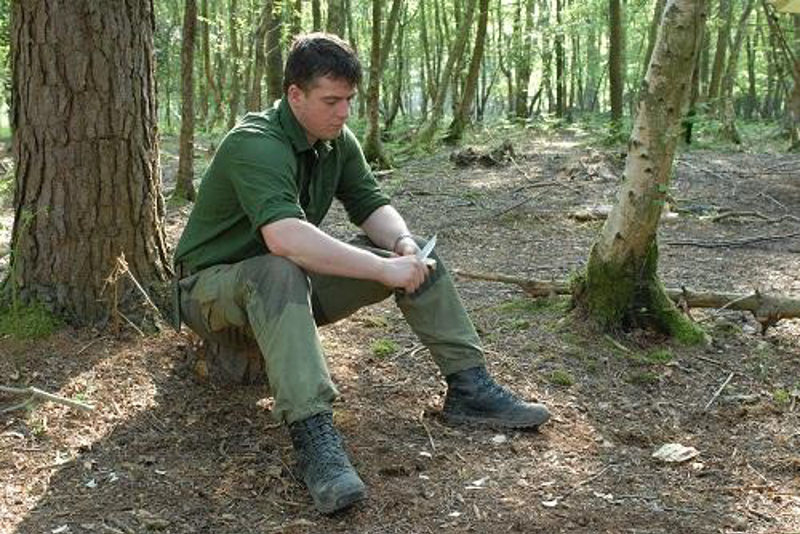
The correct way of sitting and carving
Holding the wood down the side of the leg on your cutting side allows for maximum strength to be applied to the cut, this can be helped by placing the bottom of the wood on the edge of a log or similar. Never rest the wood on a hard surface like a rock as you run the risk of damaging the blade.
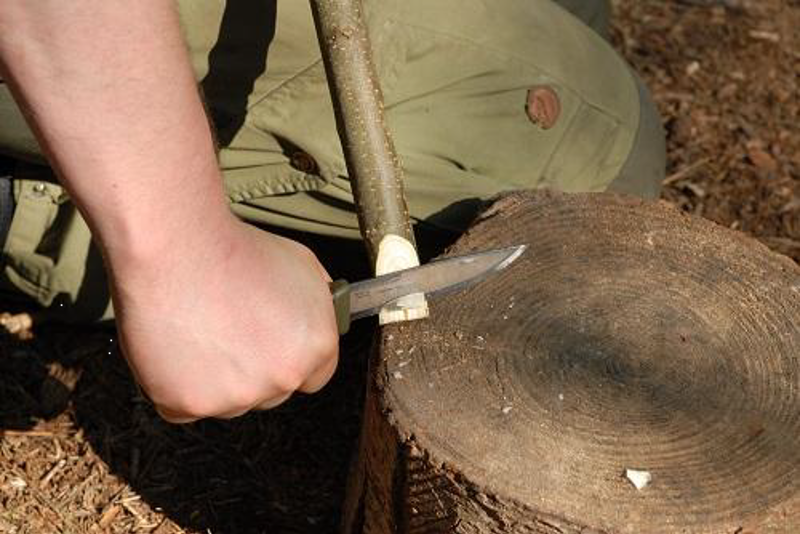
How to hold the wood
Passing a Knife Safely
While we would suggest the safest way of passing a knife to another person is to sheath it first then pass it over, these diagrams show you how an unsheathed knife can be safely passed from one person to another.
Passing a knife safely from one person to another should be done slowly and with care. Do not pass an unsheathed knife in a busy environment. If in doubt about passing a knife safely put it carefully back in its sheath before passing to another person.
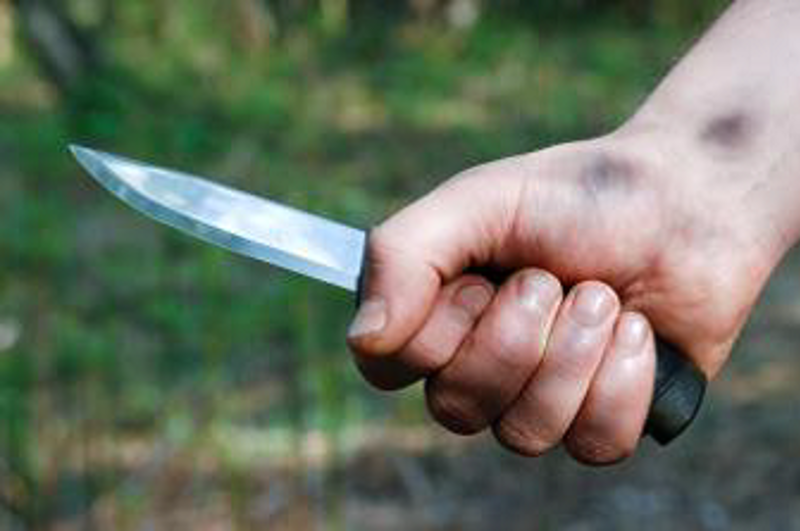
The standard punch grip
Slowly loosen your middle, ring and little finger from the handle.
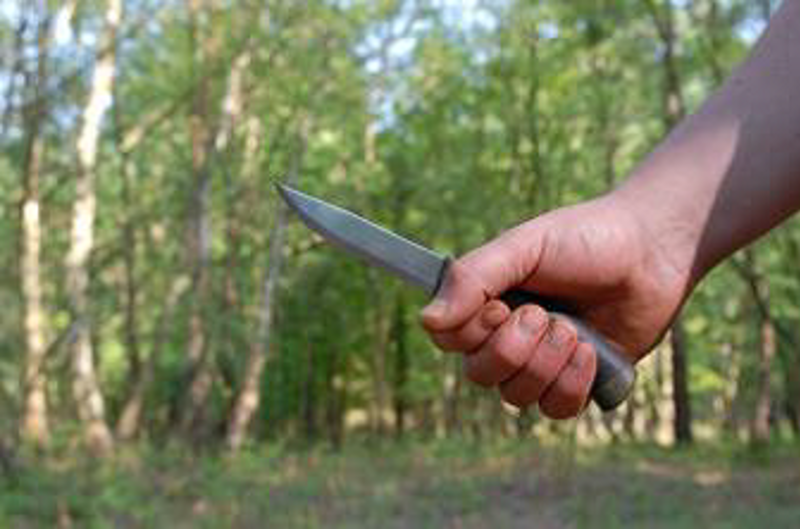
Loosen middle, ring and little finger from the handle
Use your thumb and index finger to slowly turn the knife to a vertical position (with the blade uppermost) whilst slowly moving the remaining fingers behind the handle.
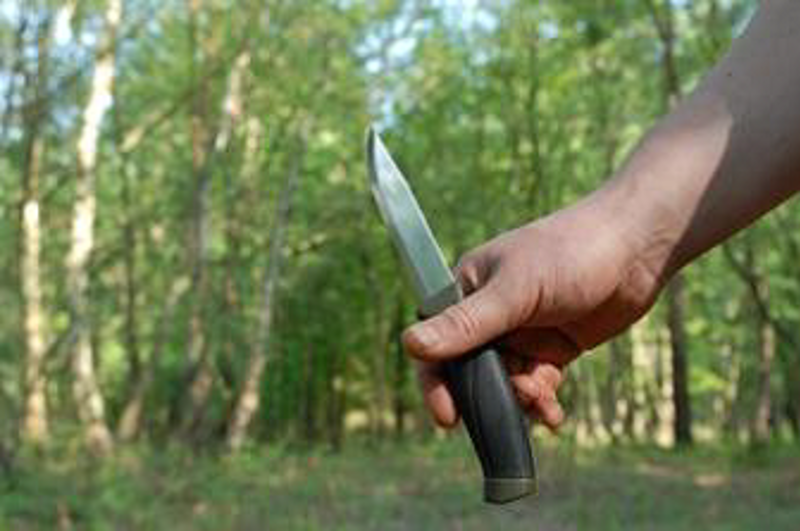
Use your thumb and index finger to slowly turn the knife to a vertical position
Finish off the positioning by taking the knife backwards to approximately sixty degrees so that the spine of the blade finishes over your hand and fingers behind the blade are roughly lined up.
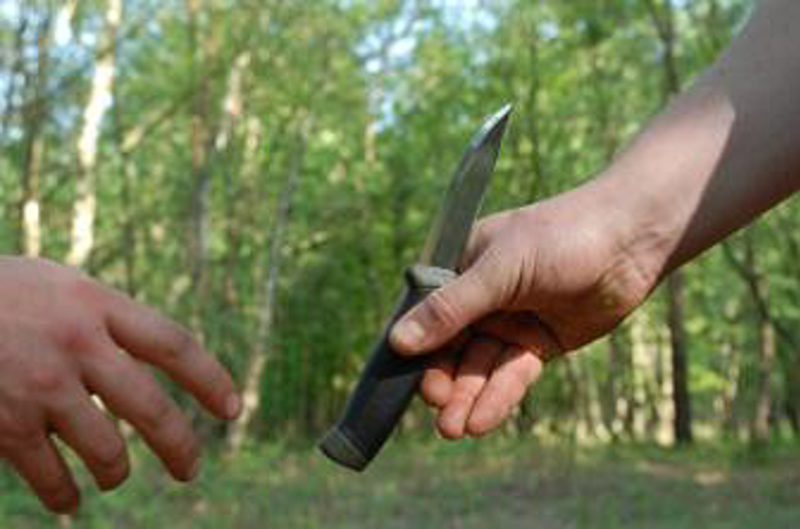
Hold the knife backwards in approximately 60 degrees
This positioning method allows you to prepare a knife to be passed without looking down so that you can see that the recipient is ready to receive it. Even if the knife is taken quickly, there is no risk of it cutting your hand.
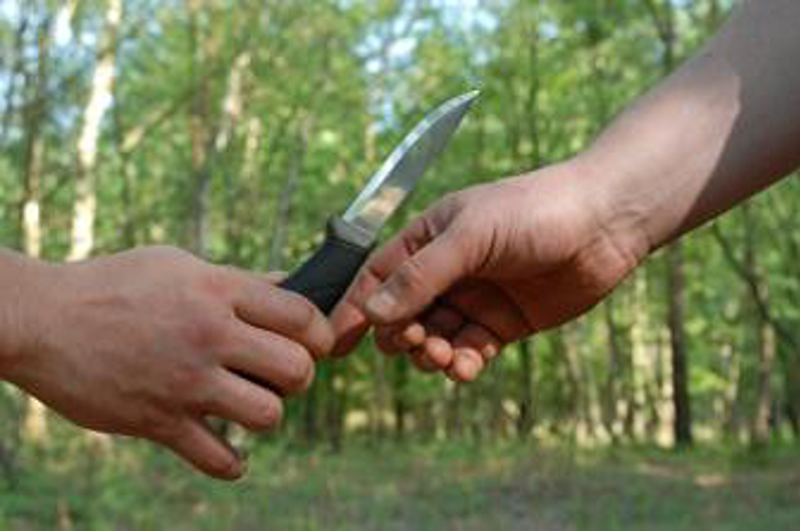
This positioning method allows you to prepare a knife to be passed without looking down
If a knife isn’t being used it needs carefully placing in its sheath. The only exception is fish or game prep when it stays in the same place after every use.
Thanks to Austin Lill and Terry Longhurst for contributing to this resource. Safety Photographs by Paul Kirtley.
The Scout Association recognises that bladed and sharply pointed hand-tools are important for working on survival skills. We promote the safe use of knives used as a tool reiterating UK Law. Knives with a fixed non-folding blade, a folding knife with a blade over 3 inches in length or a folding knife which locks in place require the person carrying such a knife in public (whatever age) to have good reason for carrying the tool. It is illegal to sell such a tool to a person under 18.
The Scout Association holds no responsibility for injuries that have occurred as a result of using this resource. Whenever a knife is to be used in an activity a risk assessment must be made and suitable controls put in place.
The information supplied is correct as of April 2022. It is the responsibility of the person undertaking the task to check for up-to-date information on knife law. For latest information check the gov.uk website.
Selling, buying and carrying knives
Up-to-date information on knife law can be found on the gov.uk website.
More info